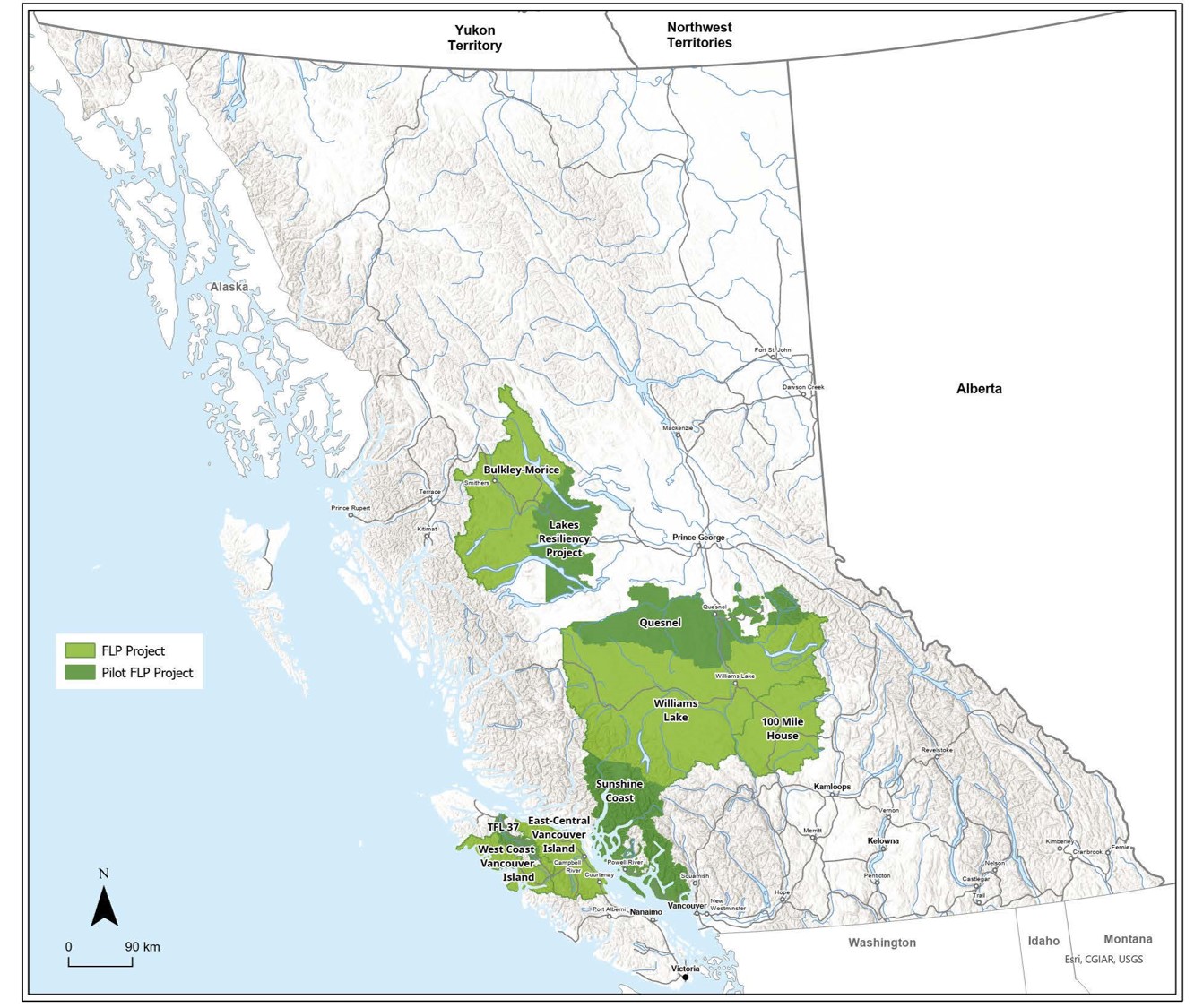Forest landscape plans
Forest landscape plans (FLP) establish clear outcomes for the management of forest resource values within defined areas. British Columbia’s new forest landscape plans will replace forest stewardship plans as part of changes to British Columbia’s forest management regime including the Forest and Range Practices Act (FRPA).
On this page
- Forest landscape plan process
- Partnerships and forest landscape plans
- Forest landscape planning framework
- Working in collaboration and cooperation with First Nations communities
- Forest landscape planning projects
Forest landscape plan process
Forest landscape plans bring high-level strategic land use planning direction to a specific forest management area and bridge the gap between strategic land use planning and operational/site-level planning. FLPs will result in deeper engagement and greater transparency with local governments and interest groups. The B.C. government will join with First Nations governments, communities, and interested parties to develop forest landscape plans in B.C.
Key goals of forest landscape plans are to:
- Identify where and how forest management activities can occur (i.e. timber harvesting, road layout, silviculture activities)
- Provide clarity on overlapping direction from strategic plans and land use objectives including wildfire risk reduction plans and access management plans
- Efficiently address changing conditions (e.g. climate change, wildfires)
- Address the potential environmental impacts of timber harvesting activities
- Consider cumulative effects to prepare for possible future forest conditions
Partnerships and forest landscape plans
Forest landscape plans are intended to be completed in partnership with First Nations and in collaboration with forest licensees. Structured engagement will occur at each of the various milestones of the planning process to gather input from interested groups, local communities, and the public. Engagement methods may vary in each FLP. Once complete, forest landscape plans will be established by the chief forester in consultation and cooperation with First Nations communities.
- Forest landscape plan pilot projects: an information bulletin (PDF, 189KB)
- Visit the Land and Water Planning platform to learn more about active forest landscape planning projects in BC.
Forest landscape planning framework
The new forest landscape planning framework responds to challenges the B.C.’s forest sector has experienced in the last decade by better addressing both current and foreseeable pressures related to:
- Coordinating forest development
- Realizing sustainable harvest levels to support B.C.’s economy
- Enabling new cooperation with B.C.’s communities and First Nations
- Achieving greater government oversight of forest management
- Ensuring that land managers have the right tools to establish resilient forests and rangelands when faced with the uncertain impacts of climate change upon these ecosystems
Learn more about the Forest Landscape planning framework (PDF, 189KB)
Working in collaboration and cooperation with First Nations communities
Forest landscape planning aligns with the B.C. Declaration on the Rights of Indigenous Peoples (Declaration Act) and the United Nations Declaration on the Rights of Indigenous Peoples (UNDRIP). FLPs enable new opportunities for First Nations to better participate in forest planning and decision-making.
Forest landscape plans must be developed in consultation and cooperation with First Nations whose rights may be affected and to reflect the right of self-government and self-determination of First Nations. This requirement is broad and may encompass a range of government-to-government decision-making processes.
The forest landscape planning process provides the opportunity to have Indigenous Governing Bodies enter into a decision-making agreement under section 7 of the Declaration Act. Decision-making agreements are negotiated and entered into by a member of Cabinet and an Indigenous Governing Body. While the scope and details of the content of section 7 agreements will evolve, they may relate to joint exercise of a statutory power of decision, or the consent of the Indigenous Governing Body before the exercise of a statutory power of decision.
Forest landscape planning projects
Government has initiated projects across the province in partnership with First Nations, communities, and the forest sector.
The four inital pilot projects continue to inform the development of related regulations and policy for future forest landscape plans:
- Sunshine Coast Forest Landscape Planning Pilot and Timber Supply Review
- Quesnel TSA Forest Landscape Planning Pilot
- Tree Farm Licence 37 Forest Landscape Planning Pilot
- Lakes Resiliency Project
Additional Forest landscape planning projects:
- Bulkley-Morice FLP
- Mackenzie
- West Central Vancouver Island FLP
- East Central Vancouver Island FLP
- Williams Lake FLP
- 100 Mile House FLP
- Thompson Watersheds
The map below shows the general areas of where the FLPs are located.
For more information of the active FLP projects visit the Land and Water Planning in BC.

